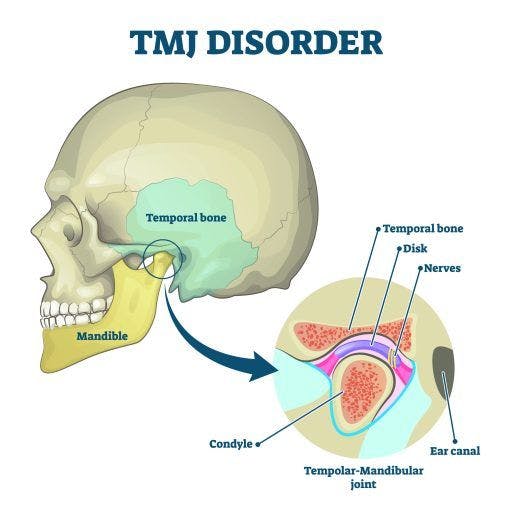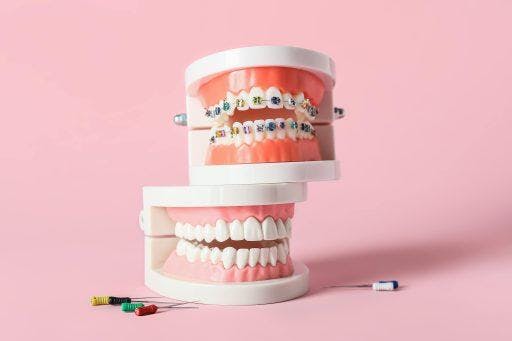Think about how much you use your jaw in a day. You talk, eat, smile, laugh, sing, yawn, and move your head up and down and from side to side. Your jaw is constantly working hard for you, which is why – ironically enough – any degree of jaw pain is so difficult to ignore.
When jaw pain hits, you will suddenly become hyper-aware of everything happening in a body part you generally ignore. You notice the slightest tug in your mandible, the littlest ache in your jaw. Suddenly, The simplest things you do become agonising.
The good news is, if you’re suffering from jaw pain, there are plenty of ways to address the underlying issues, and bring that much needed relief.
What is jaw pain?
Jaw pain can be any discomfort, soreness, or ache in your jawbone or the area surrounding your ears. It usually starts mildly, so if you treat it early, the issue might be resolved quickly.
If you ignore the jaw pain, it could lead to a more severe problem. That’s why it’s always best to see a dental professional, as soon as those first twinges start.
What does jaw pain feel like?
Jaw pain can vary in intensity and location. You might feel stiffness or a throbbing sensation around the jaw joints, and discomfort when opening your mouth. If the pain originates from your chest area, it could be a sign of heart problems. In this case, seek emergency services immediately.
What are the common causes of jaw pain?

If you’re like many Aussies, you have probably experienced a sore or aching jaw at some stage in your life. It might have been due to biting down on that apple too hard, or a result of an underlying dental problem. A wide variety of reasons could be behind jaw pain. Here are some of the most common causes:
1. Stress overload.
Whether you’re dealing with stuff at work or other life matters, stress can manifest in a tense jaw – and you could be clamping or grinding your teeth (bruxism) more often than usual without realising it. Address the root of your anxiety or make a conscious effort to cope with the pressure to help unclench your jaw.
2. Your sinuses are stuffy.
Is your nose clogged? The pain and pressure you feel from your sinuses can manifest as jaw pain. If the ache in your jaw also comes with post-nasal drip, pressure on your forehead, and dizziness, try clearing your sinuses to see if that could alleviate the situation.
3. Your teeth are to blame.
But what if your teeth are causing jaw pain? Dental problems such as a cavity, a cracked tooth, an infection, or gum disease could stretch to your jaw. Moreover, your unconscious teeth grinding could result in temporomandibular joint disorder (TMD), the primary culprit behind jaw pain.
Temporomandibular joints (TMJ) vs temporomandibular joint disorder (TMD)

People often use the acronyms TMJ and TMD interchangeably. However, the former refers to your jaw’s joints, while the latter refers to the disorder.
You can feel your TMJ working when you open your mouth. The rounded ends of your lower jaw glide along your temporal bone’s joint socket at the base of your skull. When you close your mouth, they slide back.
The muscles around the joints control your TMJ’s position and movement. They help your jaw move around – whether you’re chewing, talking, or even smiling. Your jaw’s joints are the most frequently used in your body. So, you can imagine how much wear and tear they endure when you grind your teeth.
On the other hand, TMD refers to the dysfunctions that affect the bones, joints, and muscles that help you move your jaw. TMD is more common than you think – a Journal of Investigative and Clinical Dentistry study of university undergraduates in Australia found that 77.2% experienced TMD symptoms – higher than the general Australian estimate of 23%.
What causes temporomandibular joint disorders?

As the most common cause of jaw pain, TMD can be indicative of many other concerns:
- Stress-related symptoms
- A jaw injury
- Musculoskeletal disorders such as osteoarthritis, fibromyalgia (a chronic, pain-causing condition), or rheumatoid arthritis
- A dislocation of the disc inside the TMJ
- Bruxism (teeth grinding)
- Other teeth-related problems, such as an uneven bite or ill-fitting dentures
You may have TMD symptoms if you experience the following:
- A tender or sore jaw
- Pain while chewing
- A clicking sound when you open your jaw
- Difficulty opening your jaw
- Pain around your ears
Jaw pain relief
Here are some ways you can relieve jaw pain and manage symptoms:
- Keep your jaw muscles relaxed.
- Avoid wide jaw movements, especially when chewing, talking, or yawning.
- Manage stress.
- Avoid nail-biting.
- Get enough sleep.
- Correct your posture when sitting or standing.
- Try jaw exercises.
Additionally, treatments for TMD might involve an orthodontic plan due to its close association with bruxism – where it is either a symptom or a cause. Grinding can lead to further issues, including dental wear and tear and teeth shifting. When this chain of events happens, consult your dentist to correct any consequential misalignment.
ClearCorrect is one of the leading clear aligner systems that offers superior comfort. Plus, it won’t cramp your style! It features a unique tri-layer ClearQuartz material, a flat trimline, and other customisable features that work together for a fully personalised and effective teeth-straightening solution. ClearCorrect is ideal for those seeking a comfortable and nearly invisible orthodontic option.
Take this online smile assessment to find out if you’re a candidate for ClearCorrect.
Jaw pain can be a nuisance – but identifying the right causes can help you stay pain-free and prevent further damage. Consult your doctor or dentist for a proper diagnosis and the most appropriate treatment plan for your condition.
References:
Lung, J., Bell, L., Heslop, M., Cuming, S., & Ariyawardana, A. (2018). Prevalence of temporomandibular disorders among a cohort of university undergraduates in Australia. Journal of Investigative and Clinical Dentistry.
Ohlmann, B., Waldecker, M., Leckel, M., Bömicke, W., Behnisch, R., Rammelsberg, P., & Schmitter, M. (2020). Correlations between Sleep Bruxism and Temporomandibular Disorders. Journal of Clinical Medicine, 9(2), 611.



